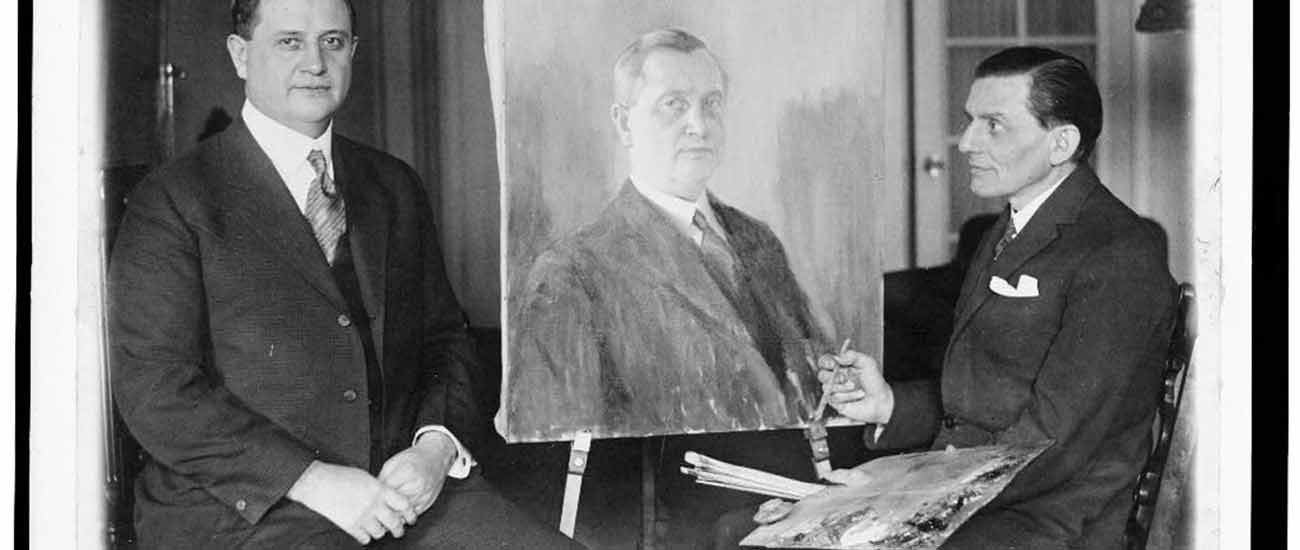Two art movements, Surrealism and Art Deco had their genesis during the 1920's. Photography was a recognized art form but advertising still mainly relied on artists and illustrators to produce the high quality black-white and color advertisements that are sought after by collectors today.

Art Styles and Artists of the 1920's
The Surrealism movement began in post-World War I European avant-garde literary and art circles, and many early Surrealists were associated with the earlier Dada movement.
The Surrealists developed techniques such as automatic drawing (developed by André Masson), automatic painting, decalcomania, frottage, fumage, grattage and parsemage that became significant parts of Surrealist practice.
Art Deco was a movement in decorative arts that also affected architecture. It derived its name from the World's fair held in Paris in 1925, which showcased French luxury goods. Art Deco did not originate with the Exposition; it was a major style in Europe from the early 1920s, though it did not catch on in the U.S. until about 1928.
Art Deco is characterised by use of materials such as aluminium, stainless steel, lacquer, inlaid wood, sharkskin, and zebraskin. The bold use of zigzag and stepped forms, and sweeping curves, chevron patterns, and the sunburst motif. See the Art Deco posters link at the bottom of the page for examples of this art form.
Two American artists who had a large impact in the illustration field were Maxfield Parrish and C. Coles Phillips. Their work was very popular in the twenties and is still sought after by collectors today.

Maxfield Parrish (July 25, 1870 - March 30, 1966) was an American painter and illustrator born in Philadelphia, Pennsylvania. He began drawing for his own entertainment as a child and his parents encouraged his natural talent. He attended Pennsylvania Academy of the Fine Arts and then pursued an artistic career over many decades that helped shape the Golden Age of illustration and the future of American visual arts.
In the 1920s, Parrish turned away from illustration and concentrated on painting for its own sake. Androgynous nudes in fantastical settings were an often recurring theme. In 1931 he decided to focus solely on landscapes.
Parrish's art features dazzlingly luminous colors. He achieved the results by means of a technique involving several coats of oil and varnish applied to his paintings.
C. Coles Phillips (1880, Springfield, Ohio - 1927, New York City), studied at Kenyon College in 1902, where he found an audience for drawing in the school yearbooks. After leaving Kenyon, Phillips moved to New York where he took classes in art school before starting his own advertisement agency. In 1907, Phillips met with J.A. Mitchell, the publisher of Life Magazine, and was hired at the age of 26.
Phillips became very popular with Life Magazine readers and was awarded cover assignments. In 1908, he created a cover that would become his trademark. By combining foreground and background elements of the same color, he created the "fadeaway girl," which became a popular convention in print art for decades to follow.
1920's ART RESOURCES
Discover more about SurrealismA very comprehensive guide about surrealism, techniques, benefits etc...
Renee Prahar - Sculptor
A pioneer in Sculptural Fantasies to lift the after-war gloom
